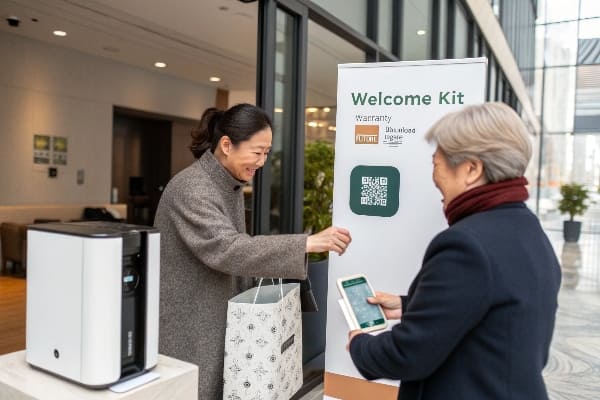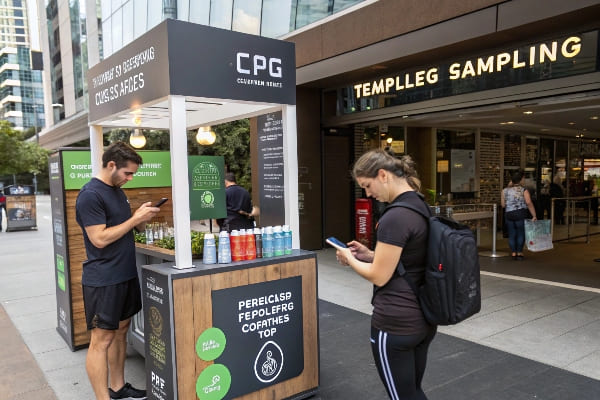When sales flatten, I picture my factory floor sitting idle and I feel the pressure. I must spot the real block, stir the pain, then fix it fast.
A strong CPG marketing plan links shopper insight, clear value, and repeatable in-store triggers so brands keep shelf space, grow velocity, and lower cost per acquisition.

I know you have options, David. Stay with me a few minutes and I will unpack a full set of tactics you can lift and run this quarter.
What is the marketing strategy of consumer durable goods?
People hold on to durable goods for years. That long cycle hides churn. I draw attention to the hidden drop-off, widen the gap, then offer steps to close it.
A consumer-durable strategy maps the post-purchase journey, builds service touchpoints, and re-engages owners with upgrades or add-ons before the next buying window opens.

Ownership Stages and Key Moves
I sell cardboard displays, you sell crossbows, yet we both watch buyers move through the same stages.
| Stage | Goal | Sample Tactic | Popdisplay Example |
|---|---|---|---|
| Pre-purchase | Spark desire | Demo videos in aisle | Floor-standing display with QR code |
| Purchase | Reduce risk | Bundle warranty | Insert warranty card holder |
| Post-purchase | Confirm value | Setup emails | Pack-in “first-shot” tips insert |
| Usage | Deepen bond | Loyalty app | Tear-away coupon for wax refills |
| Repurchase | Shorten cycle | Upgrade trade-in | POP tray showing new models |
Durable goods1 need ongoing voice2. I keep owners learning new tricks. I invite them to share wins online. I offer timed service reminders that point back to the brand site. When a display leaves my dock, I already plan the next contact, because silence is the real enemy. By tracking serial numbers, segmenting use cases, and feeding repair data into creative, I squeeze more value from the same buyer list. The result: lower lifetime acquisition cost3 and closer retailer ties.
Which is the most successful marketing tactic?
Every quarter I face the same fear: which lever moves revenue fastest? I highlight the pain of wasted spend, stir urgency, then show the one lever that scales.
The highest-return tactic is precision sampling that matches buyer intent, delivers instant proof, and captures data for follow-up automation.

Why Precision Sampling Wins
Sampling looks old, yet data turns it sharp. I print NFC tags on each display. The tag fires a mini-survey when tapped. I know who tasted, shot, or touched the item. I feed that lead into email and ads the same day.
| Element | Action | Outcome |
|---|---|---|
| Micro-geo targeting4 | Place displays only in top 20% velocity stores | Cuts waste |
| Smart packaging | NFC or QR unlocks instant how-to | Raises engagement |
| Same-day remarketing5 | Push coupon within 2 hours | Doubles conversion |
| Post-trial content | Send use video shot in factory | Extends story |
| Data loop6 | Share scan stats with retailer | Wins end-cap renewal |
I learned this on a tight budget. One season we seeded crossbow wax samples inside a compact counter display. Scans told us peak hours. We pivoted staff scheduling for demos and beat forecast by 28%. Sampling worked because it blended experience and measurement, and because follow-up was baked into the physical unit itself.
What are the 5 A’s of marketing strategy?
Marketers drown in models. I point to the confusion, shake it, then lay out a simple five-step ladder you can recall under stress.
The 5 A’s are Aware, Appeal, Ask, Act, and Advocate—guiding prospects from first sight to loyal voice.

Walking Through the A’s
I run these steps every time I design a display brief.
| A | Core Question | Practical Move | Display Tie-In7 |
|---|---|---|---|
| Aware | Do they see me? | Bright header, motion strip | LED edge lighting |
| Appeal | Do they like me? | Story panel with image of hunter hitting target | Lifestyle print |
| Ask | Do they want details? | QR to specs sheet | Side pocket brochure |
| Act | Do they buy? | Limited-time tag | Perforated coupon flap |
| Advocate | Will they share? | Hashtag on backdrop | Social call-out |
A’s force me to remove fluff. If a graphic does not push the shopper to the next A, it goes. My team holds a five-card review8. Each slide must earn its A. Simple questions keep projects on time, and they fit any budget. When we pitched a major U.S. chain last fall, this structure helped the buyer grasp the flow in under two minutes. We closed the deal on the spot.
What are the 4 core marketing strategies?
Growth paths feel abstract. I expose the risk of guessing, rub in the cost, then share four clear roads you can choose.
The four core strategies are market penetration, product development, market development, and diversification—each balancing risk against possible gain.

Choosing Your Road
I map these against my own export work.
| Strategy | Current Product? | Current Market? | Risk Level | Popdisplay Move | Barnett Crossbows Move |
|---|---|---|---|---|---|
| Market Penetration9 | Yes | Yes | Low | Deeper deals with U.S. chains | Boost retail ads in Midwest |
| Product Development10 | No | Yes | Medium | Add corrugated power wings | Launch carbon-limb upgrade kit |
| Market Development11 | Yes | No | Medium | Enter German DIY stores | Sell in Canadian hunting shows |
| Diversification | No | No | High | Offer full metal racks | Release fishing bow range |
I start with penetration because my lines and markets are known. Once velocity is stable, product tweaks feed fresh margin. In 2023 I introduced a quick-setup display kit. Same buyers, new SKU, 15% incremental revenue. Only after funds grow do I test new regions. Diversification is rare; I treat it as venture capital funded by the other three. This ladder stops random jumps and keeps the team focused.
What are the 3 C’s of marketing strategy?
Without a compass, I drift. I highlight the drift, turn the screw by showing lost time, then present three constant points.
The 3 C’s are Company, Customer, and Competitor—an easy lens that aligns resources, needs, and market gaps.

Keeping Balance with the 3 C’s
I run a monthly audit on each C.
| C | Key Check | Popdisplay Insight | Action This Month |
|---|---|---|---|
| Company | Core strength | Fast prototyping12 | Cut sample lead time to 48 h |
| Customer | Top pain | Late launch fear13 | Offer delivery penalty clause |
| Competitor | Bold move | Cheaper inkjet print14 | Showcase offset color accuracy |
I write findings on one sheet. I share it with sales, design, and ops. The sheet forces agreement. When we saw rivals cut price, we pushed our testing story instead of matching. We won buyers who valued uptime. Your crossbow brand can run the same drill: ask what you do best, what users cry about, and what rivals threaten, then place each insight into the triangle. The clear view protects margin and directs R&D.
Conclusion
Sharp CPG marketing rests on clear models, tested tactics, and live data loops. Pick one tool today, build a small test, and watch control return to your hands.
Understanding durable goods can enhance your marketing strategies and customer engagement efforts. ↩
Exploring the role of customer voice can help you strengthen brand loyalty and improve customer relationships. ↩
Learning about lifetime acquisition cost can help you optimize your marketing budget and improve profitability. ↩
Explore this link to understand how micro-geo targeting can optimize your marketing strategy and reduce waste effectively. ↩
Discover the benefits of same-day remarketing and how it can significantly boost your conversion rates in real-time. ↩
Learn about data loops and how they can enhance your marketing efforts by providing valuable insights and feedback. ↩
Explore this link to discover innovative display tie-ins that can enhance your marketing strategy and engage customers effectively. ↩
Understanding the five-card review can streamline your project management process and improve team efficiency. ↩
Explore this link to discover proven strategies that can enhance your market penetration efforts and drive growth. ↩
This resource will provide insights into best practices for product development, helping you innovate and meet market demands. ↩
Learn about effective market development strategies that can help expand your business into new territories and customer segments. ↩
Explore this link to understand how fast prototyping can enhance your product development process and improve time-to-market. ↩
This resource will provide strategies to mitigate late launch fears, ensuring smoother product rollouts and customer satisfaction. ↩
Discover why offset color accuracy can be a game-changer for your printing needs, offering superior quality over cheaper alternatives. ↩

